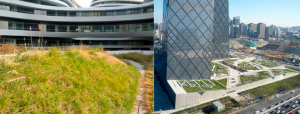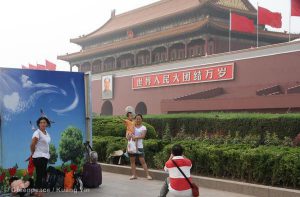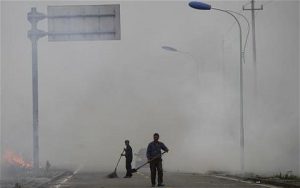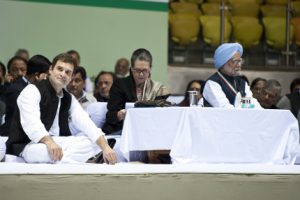Smog has become an unfortunate feature of Chinese city skylines. Air pollution has gotten so bad in recent years that citizens have rallied and the government has declared a war on it. One weapon in its arsenal is to plant an army of trees that will help neutralise pollution particles in the air.
Beijing, the seat of the government, is on China’s industrial east coast and has been affected as much as the next city by polluted air. Faced with the challenge, the local Beijing government initiated a programme in 2012 that will invest a total of 30 billion yuan (US$4.7 billion) to construct 67,000 hectares of trees around Beijing in the next few years. That’s the equivalent of 200 Central Parks, spread across the city.
Adopting this unconventional control measure on such a large scale is a bold move for the local government in Beijing. But studies have shown that trees can reduce smog particles in the air both directly, by intercepting particles already in the air, and indirectly, by lowering air temperatures through shade and evapotranspiration (when water is taken up into the atmosphere off and through vegetation).
The cooling effect this has reduces the need for energy-using fans and air conditioners, which further lowers emissions. Also, the rates of photochemical reactions in the urban atmosphere are slowed down by the lowered air temperature and less secondary air pollutants are produced.
The species of trees, and location chosen for more than 100 million of them, will have a significant impact on the effectiveness of this control measure in Beijing. Trees can actually become a source of air pollution too. Some species are high emitters of biogenic volatile organic compounds. These react with nitrous oxides and other chemicals in the air to form ozone and secondary organic aerosols, which are tiny “tar balls” found to have bad health effects. Ozone is the main component of urban smog and secondary organic aerosols are also a source.
It has even been suggested that more vegetation in urban environments could reduce the dispersal of smog particles. Urban forests can potentially decrease the strength of convective mixing – where air pollutants are lofted up and away from the surface, taking them out of contact with people. The “urban boundary layer” of the urban atmosphere is also lowered, trapping heat and pollutants closer to the the earth’s surface. So it’s important that the right trees are planted.
Supported by the National Geographic Air and Water Conservation Fund, my group is currently studying just how effective urban forests could be in Beijing. The initial results from our study are mixed. Trees planted in the last two years can reduce pollution particles from Beijing’s air, but the magnitude of removal is far lower than the government would hope.
Six tree species that have been used extensively in planting across the city are high emitters of the potentially problematic biogenic volatile organic compounds, which could add to problems down the line. Currently we are still in the process of modelling what the long-term effects will be once all the trees have been planted and matured. This means it’s too early to say what the final impacts of trees are on smog particles in Beijing.
However, a study of 10 US cities showed that urban trees did remove smog particles and improve the air quality of those cities by 0.05%-0.24%. Based on this, the improvement would be higher in Beijing due to the higher concentration of smog particles, though the reduction is unlikely to be as significant as hoped for by the government.
So, what is the message for other cities? Making cities greener by planting urban forests should not be treated as a stand-alone air pollution control measure. In fact, measures that are more effective but also more painful to implement should be given priority, such as reducing the use of cars.
Urban forests can play an important role in making cities nicer places to live and they do have cooling, pollution-reducing effects. But, it’s important to remember that it is our growing use of cars and industrial emissions that are the source of the smog; sadly no amount of trees can counteract this.
This article was first published by The Conversation





